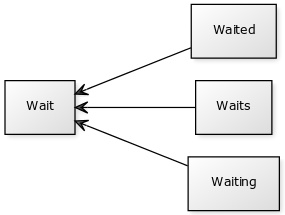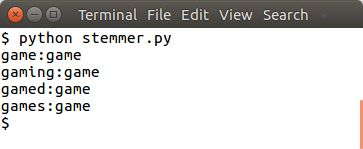Python hosting: Host, run, and code Python in the cloud!
A word stem is part of a word. It is sort of a normalization idea, but linguistic.
For example, the stem of the word waiting is wait.
 word stem
word stem
Given words, NLTK can find the stems.
Related course
Easy Natural Language Processing (NLP) in Python
NLTK - stemming
Start by defining some words:
words = ["game","gaming","gamed","games"]
|
We import the module:
from nltk.stem import PorterStemmer
from nltk.tokenize import sent_tokenize, word_tokenize
|
And stem the words in the list using:
from nltk.stem import PorterStemmer
from nltk.tokenize import sent_tokenize, word_tokenize
words = ["game","gaming","gamed","games"]
ps = PorterStemmer()
for word in words:
print(ps.stem(word))
|
 nltk word stem example
nltk word stem example
You can do word stemming for sentences too:
from nltk.stem import PorterStemmer
from nltk.tokenize import sent_tokenize, word_tokenize
ps = PorterStemmer()
sentence = "gaming, the gamers play games"
words = word_tokenize(sentence)
for word in words:
print(word + ":" + ps.stem(word))
|
 Stemming with NLTK
Stemming with NLTK
There are more stemming algorithms, but Porter (PorterStemer) is the most popular.




Leave a Reply:
I tried with the word identifying i am getting as output identifi